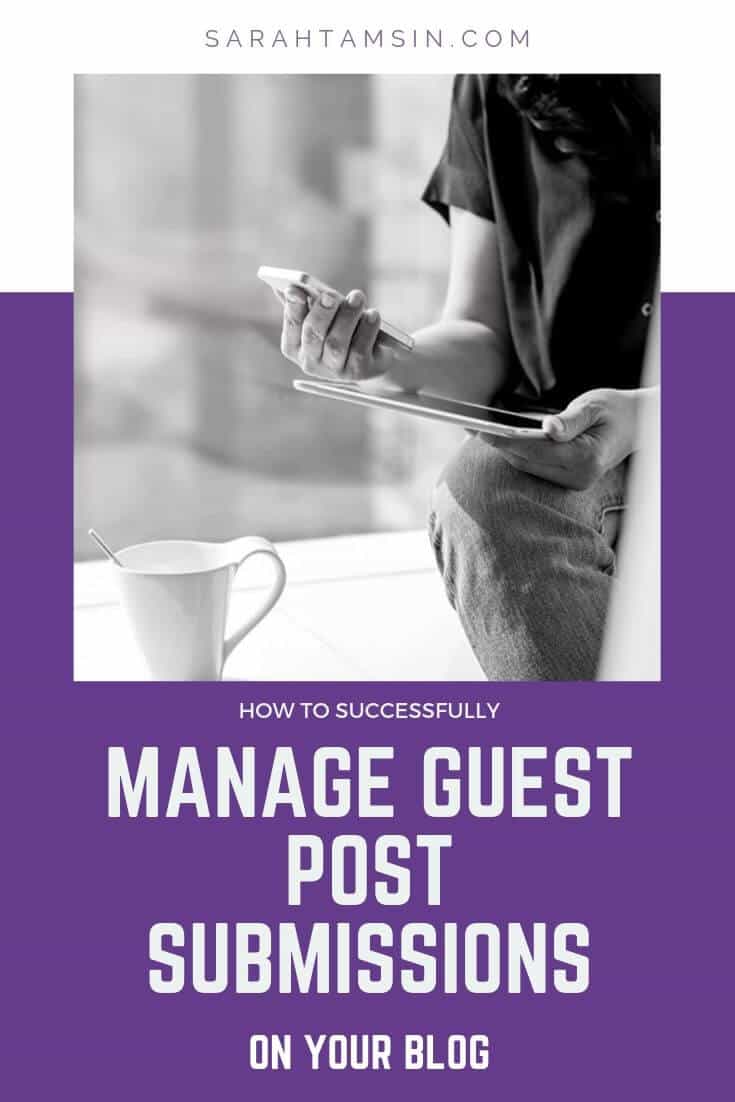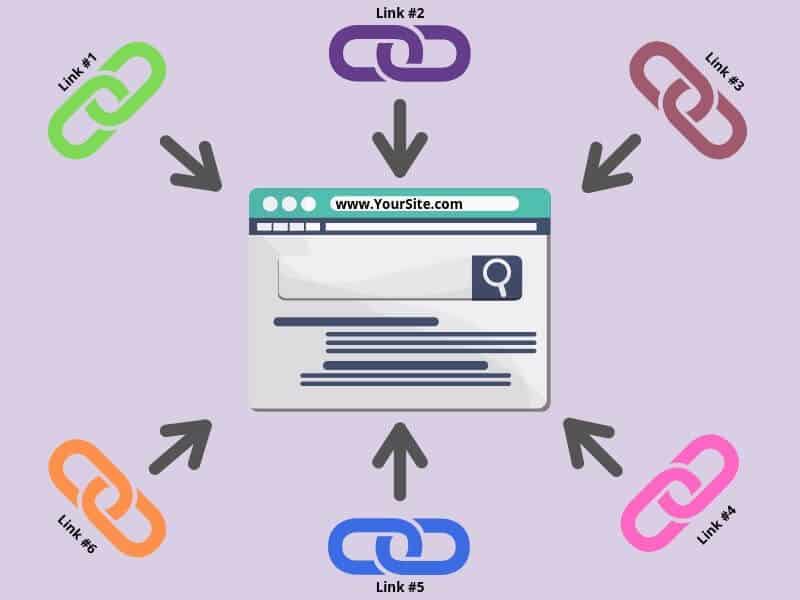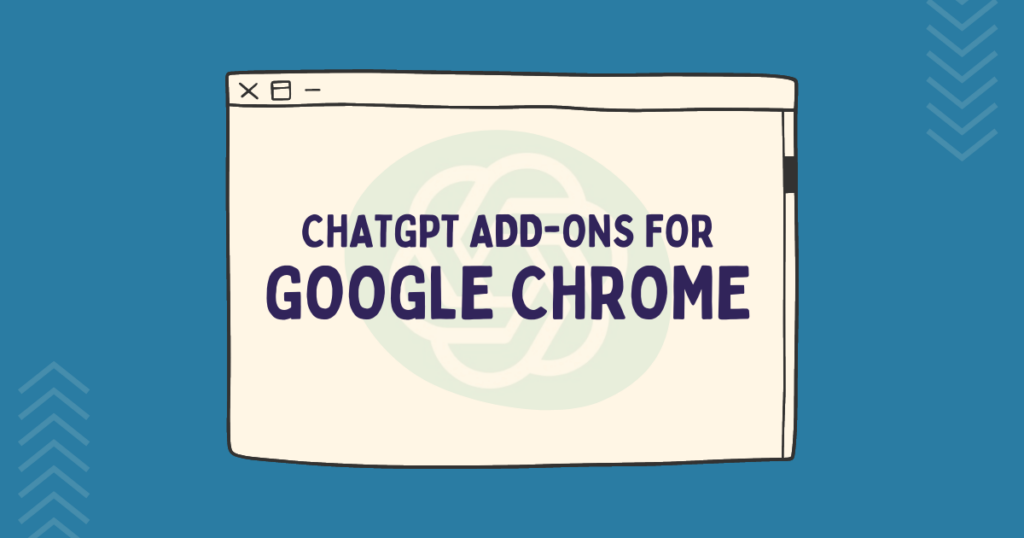Does your blog allow guest posts? Are you finding it a challenge to manage all the guest post submissions in your Inbox? Accepting guest posts can be a real nightmare, you’ll suddenly be inundated with requests in very poor English from dubious companies and SEO agencies.

Some companies will even offer to pay you to publish an article on your blog, which sounds too good to be true (it usually is).
It can be extremely daunting as a new blogger or business to suddenly have your inbox full of people wanting to publish content on your site.
This article is to help you manage guest post submissions for your personal blog, business blog or passive income site. Continue reading to learn heaps of helpful tips and advice for managing guest bloggers on your website.
There may be some language which is considered jargon but I’ve done my best to explain these terms where possible.

Contents
What is Guest Posting?
A guest post or guest blogger is when someone else (another person or company) contributes an article to your website. Guest bloggers may contribute a single article or become a regular contributor to your site.
Bloggers usually choose to collaborate with other bloggers in their industry or niche, whereas businesses look for specific blogs to collaborate with to leverage the blogger’s audience.
Why are Guest Posts are Thing?
Guest posts exist for several reasons. Posting some content on someone else’s blog means there will be more pairs of eyes on it.
Their audience will be reading it and there’s the potential for their audience to also become your audience. Bloggers who choose to accept guest posts also get free content for their site, which may be on a topic they wouldn’t be able to blog about themselves.
This means that guest posts are great for growing your audience, especially if the guest poster’s blog is less established. But, there’s another benefit to posting content on other people’s websites and that’s backlinks, of course!
Backlinks: A Very Brief Overview
Backlinks are when other websites link to yours; they have an impact on your website’s SEO and Page Rank with Google. A backlink from one website to another is a bit like a small endorsement that Google will see. Backlinks from other websites and blogs with a high authority in your niche can be valuable, if you have a high authority site then other sites will want a backlink from you.
Backlinks are only valuable if they’re relevant, non-spammy and from established authoritative sites. So many SEO practitioners focus on backlinks as being the epitome of ranking well with Google, but this is simply not true. You can’t create a terrible article, get 10,000 backlinks to it and expect it to rank well forever. But you can focus on creating high quality article that your audience will love, which is far more important!
In short, using backlinks as a shortcut to get a crappy piece of content to position #1 won’t work for very long…

If you allow someone else to write a guest post on your site, you’ll inevitably be linking to them from that post and therefore endorsing their site. Also, if you guest post on someone else’s blog, you’ll be getting a valuable backlink from them.
Many marketing and SEO agencies take advantage of this and will send blanket emails to tens of thousands of bloggers with the hope that one of them will accept the post. Some unscrupulous bloggers, agencies or SEOs will aggressively fire thousands of irrelevant guest post requests into other blogger’s inboxes. This link-building strategy is nothing but compensation for poor quality articles.
So, How do you Manage Guest Post Submissions on your Personal or Business Blog?
Here are some time-saving blog management tips to help you filter through the poorly crafted submissions and separate the wheat from the chaff.
Ignore 99% of Requests in your Inbox
So many requests to “guest post” are not even genuine. More often than not, they’ll want to send you a shitty 600-word badly written piece of drivel that’ll be full of grammatical errors or not even relevant to your site.
These requests are obvious and can be easily ignored by hitting the delete button on their email. Here is a recent email I received:

You can safely ignore any similar requests that end up in your inbox.
Publish a set of Guest Posting Guidelines on your Site
All of my blogs and passive income websites have a page that outlines all the guest post guidelines. I’ve set up an auto-response to every email that says “Guest Post” in the subject that links them to the guidelines.

At the bottom of the guidelines is a submission form and I only accept requests from bloggers who have actually filled out the submission form!
For example, my guidelines include:
- Only 2 followed links to your own blog or website only
- No affiliate links or links to other websites which aren’t yours
- Must be at least 900 words long and include two original pictures
- Must be original content that’s not published elsewhere
- No spam, hate speech or inappropriate swearing
You can include whatever guidelines are appropriate for your site. It’s a good idea to have them to filter out all the spammy agencies and companies who just want back links! Only about 1% of the requests for guest posts I get come through the submission forms, so I can ignore and delete the other 99%…
Only Accept Submissions from Individual Bloggers
You can avoid the spammy agencies all together by having a policy that only allows other bloggers (individuals) to submit guest posts.
To make the agencies go away, quote them a ridiculously high price and insist any links have the sponsored or new sponsored attribute added. That will stop them from emailing you!
The nofollow attribute is a tiny piece of code you add to your links in order to tell Google and other search engines to not give backlink credit for the link. It’s useful for use with monetised links, as Google’s Guidelines forbid the buying and selling of backlinks. All links from comments you leave on blog posts, social media and forums are sponsored by default. Most links you manually add to blog posts do not have any particular attribute added to them and will be ‘followed‘ by search engines by default. WordPress automatically adds noopener and noreferrer attributes, but those aren’t so relevant in the context of guest posting and link building.
In September 2019, Google announced two new attributes for publishers to use when linking to other sites, “sponsored” and “ugc” (user-generated content). Sponsored links indicate you’re being paid to add that link, whereas ugc indicates that these are user-submitted links; blog comments or forum posts, for example. These attributes tell Google to pay less attention to these links,
To make any link nofollowed or sponsored on your website, add rel=”nofollow” or rel=”sponsored” within the <a> tag of the link. So, a nofollowed link to the BBC would look like this:
<a href=”https://bbc.co.uk” rel=”sponsored” target=”_blank”>BBC</a>
Use a Plagiarism Checker
This plagiarism checker will make sure the content is completely original and not pilfered from elsewhere. It’s can detect whole sentences that have been lifted from other articles. SmallSEOTools has a free Plagiarism Checker you can use by simply pasting in text, it will then search the web to check the text for originality.
Reverse Image Search
Similar to the Plagiarism Checker, you can use Google’s image search to make sure the guest poster’s images are original and/or they have correct permission to use them.

To do this, save the image on your computer, then go to image.google.com and drag that image file onto the search page. Google will then search for all other instances of that picture being uses across the web.
Always ask the guest poster to provide a few sentences to use at the bottom of the post as an author bio. This adds credibility to the content and ensures sincerity from the author.
It looks more professional to change the bio into third person, for example, Bob is a teacher and a blogger from London… instead of “My Name is Bob and I am a teacher…”
Check the Guest Poster’s Links Carefully
It’s definitely a good idea to check any links in the guest poster’s article before you hit ‘publish’. You should check to see where the pages actually lead in case the URLs have been shortened or otherwise obfuscated.
People can redirect existing links weeks, or even months after submitting a bunch of guest posts around the internet. So try to remember to go back and routinely re-check them all periodically, as linking to a dodgy site could harm your readers and your search engine rankings.
This is pretty poor practice, but it does happen.
So, those are my tips for managing guest bloggers and guest post submissions on your personal or business blog. How do you cope with the challenge of managing guest post submissions? Share your strategies by leaving a comment!



